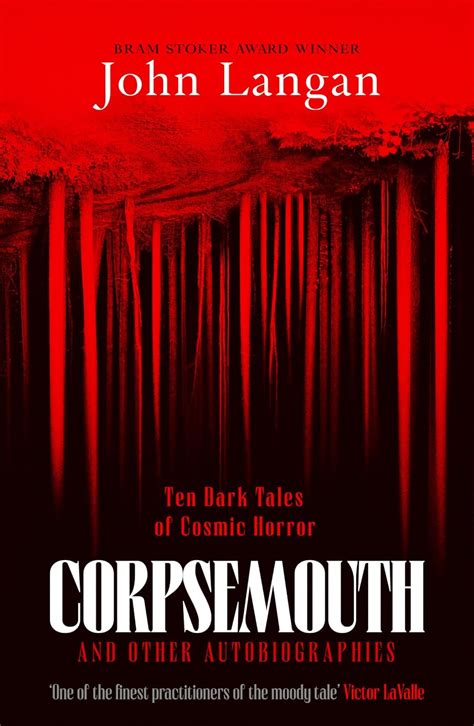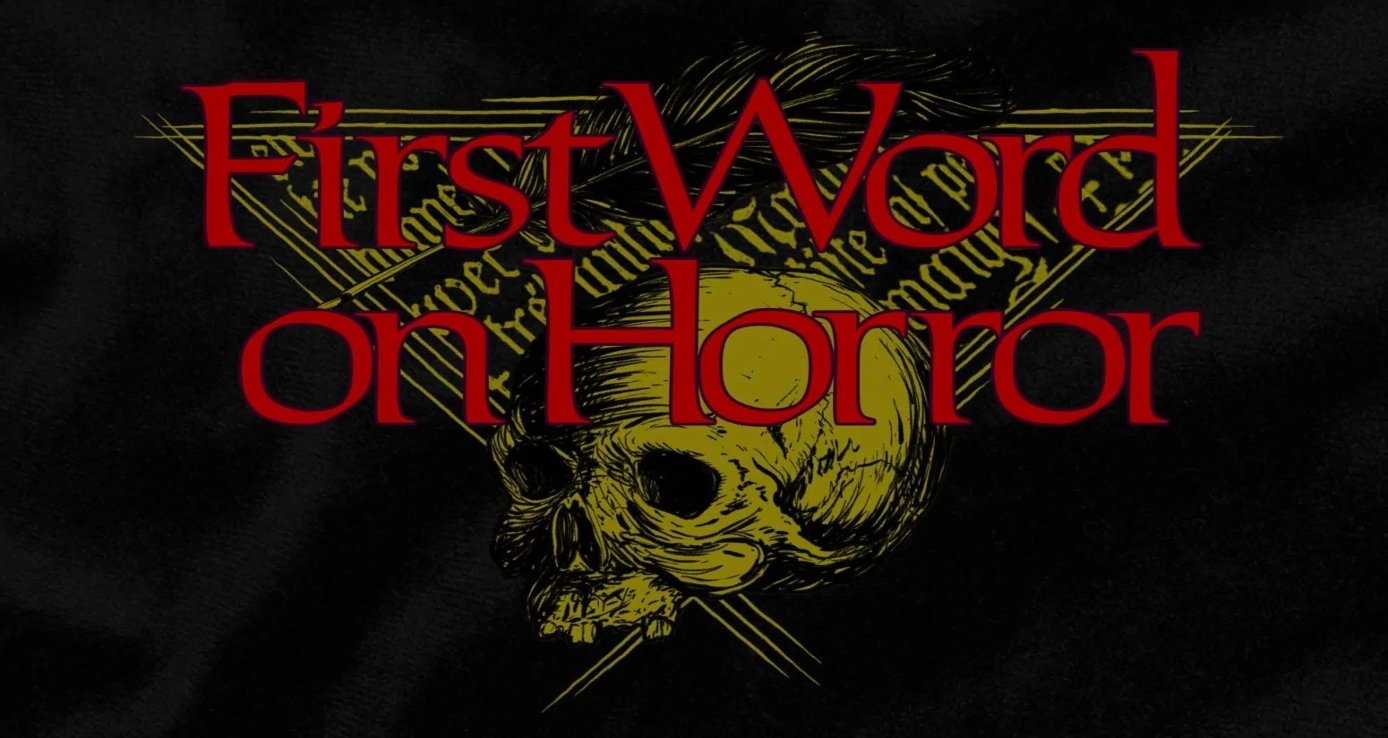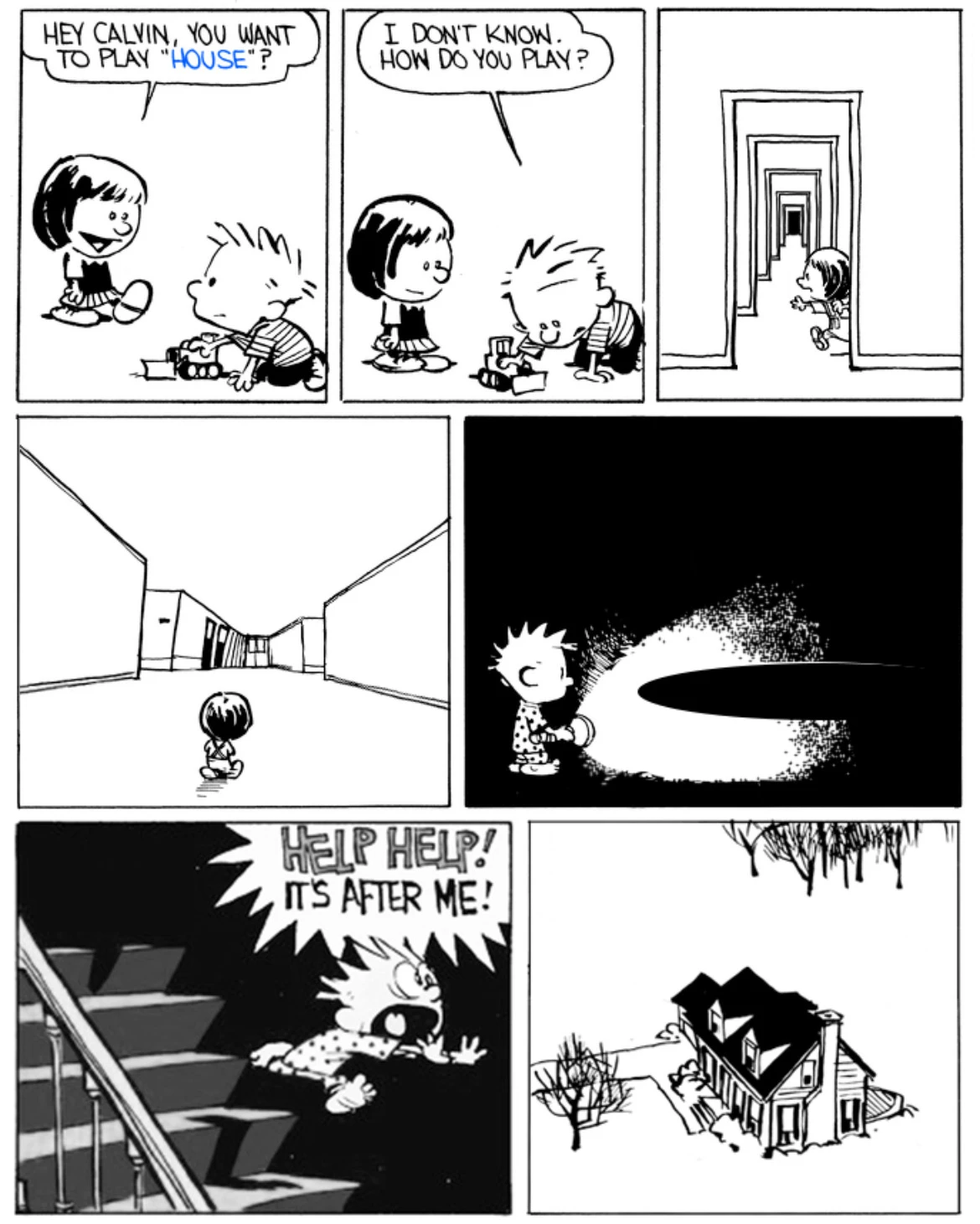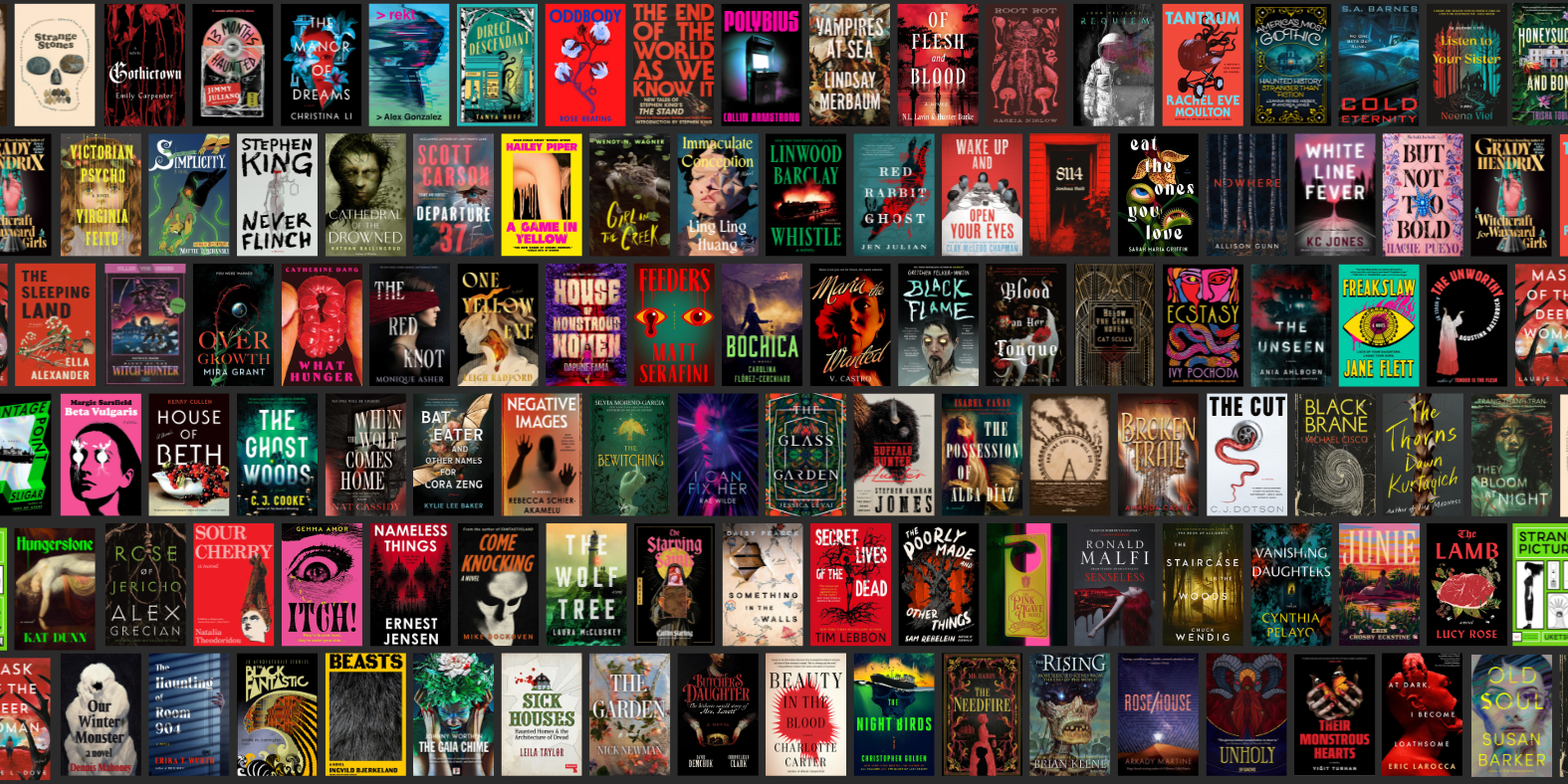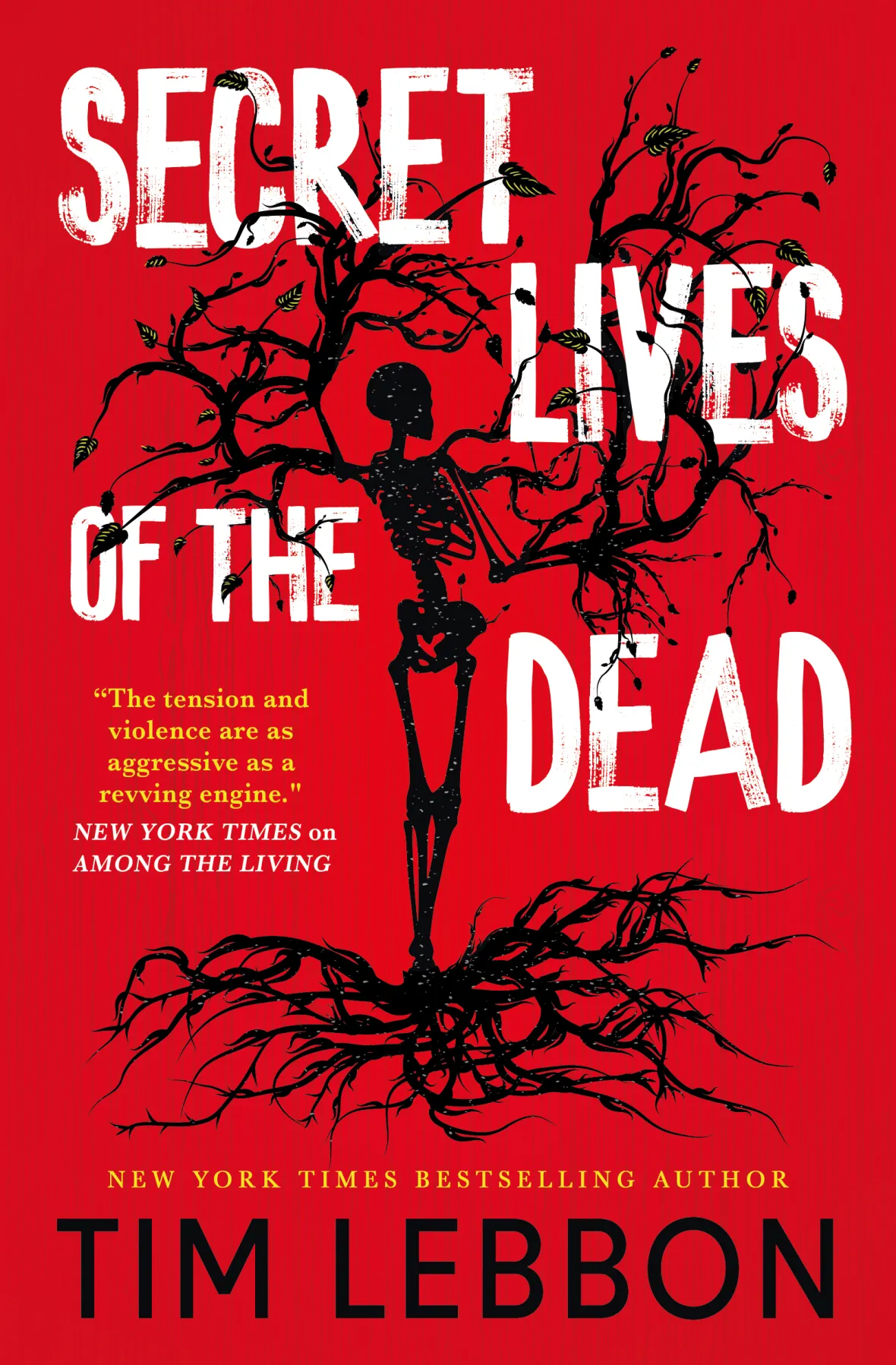I came across a BookRiot article recently that reduced my favorite genre to "a mood," (para. 2) and it bothered me enough that I immediately wanted to set the record straight. All one had to do was search weird fiction and skim the Wikipedia article to see that it is very much not just a mood.
(Also the article says "Good weird horror is something that you cannot look away from, no matter how hard you try to." This is just... any good book. It doesn't have to be weird. If you can't look away from a book of any genre, it's just a good book.)
Defining the Weird
It is, admittedly, well known that the weird genre is hard to pin down with a clear definition. Some writers even call it a "mode" or "something that slips between genres. While undoubtedly most closely related with horror, it also engages with the numinous...also...a lack of narrative closure is one of its frequent identifiers" (Neuharth para. 3).
Personally, I often think of Lovecraft's opening line from his essay Supernatural Horror in Literature, (which is a pretty good read and introduction to the beginnings of the Weird):
The oldest and strongest emotion of mankind is fear, and the oldest and strongest kind of fear is fear of the unknown.
When we've stepped into unknown territory, especially if it's something the human mind struggles to comprehend (like cosmic horror), that's when things start to get weird.
The Origins of the Weird
This next part needs to be in bold, because it was my main issue with the article, where they claim "Weird horror has grown in popularity over the last half decade or so, thanks in no large part to the larger growth in horror, period" (para. 1).
Weird horror is NOT new, modern, or just now growing in popularity. It has roots in a literary movement dating back to the late 19th century.
Let's break it down. In Duke University's journal Genre (2016), Benjamin Noys and Timothy Murphy propose:
... a three-stage periodization for the development of weird fiction, the unstable hybrid of horror, science fiction, and fantasy most often associated with H. P. Lovecraft: Old Weird (1880–1940), which is centered on Lovecraft's literary and critical work and the pulp magazine Weird Tales that gave the genre its name; Weird Transition (1940–80), a period marked by the apparent decline of the genre but that actually sees the migration of weird elements into a broad range of genre and media practices; and New Weird (1980–present), which critiques the Old Weird's reactionary politics by adopting a radically affirmative perspective on the body and the alien. During the New Weird period, philosophy and critical theory are also infected with weird elements of nihilism and radical antihumanism, as in the speculative realist school. This historical perspective reveals the weird to be a form of “pulp modernism” that is irreducible to high modernism or postmodernism.
(emphasis in bold is mine)
Roots in the Gothic Supernatual
You could say weird fiction emerged as an offshoot of the growing supernatural, Gothic, and Dark Romanticism genres. Generally, gothic fiction is unsettling, uncanny, and weird in the sense that something feels off, but you can't put your finger on it. An underlying sense of dread. This shows up in authors like Bram Stoker with Dracula, Mary Shelley's Frankenstein, Sheridan Le Fanu's Carmilla, and pretty much anything by Edgar Allan Poe.
Then H.P. Lovecraft came along. His "reading of the tradition allowed him to tease out the elements that constituted weird fiction and to distinguish it from the gothic, with its 'secret murder, bloody bones, or a sheeted form clanking chains according to rule'" (Noys and Murphy, p. 120).
Lovecraft's weird legacy lives on in the ever-evolving Cthulhu mythos, and the various literary references to it. Think of how many times the Necronomicon shows up in TV shows or films. It's likely that even if you know nothing about weird fiction, you've seen the Necronomicon show up somewhere.
So, yeah, most of the first weird writings centered around the supernatural or paranormal, best done with a mix of psychological horror, just as its proto-genre gothic fiction did. (Again, see Lovecraft's Supernatural essay). These writers' blend of the uncanny was new and different from the norm. Weird. The article is right when it says "weird horror breaks the mold."
This is where "non-European storytelling styles" and "'cross-cultural' authors that pull from a wide array of experiences" (para. 5) comes in. Many of these authors were incorporating previously unseen or unheard of foreign practices, pulling from the popularity of studying the occult and ancient pre-Christian spiritual practices. Sometimes they were treated as the antagonist or enemy force, like in The Beetle by Richard Marsh, The Great God Pan by Arthur Machen, and most of Lovecraft's racist works.
Some authors from this period of weirdness whose works I've loved:
- Clark Ashton Smith - The Star-Treader and Other Poems
- William Hope Hodgson - The House on the Borderland
- Algernon Blackwood - The Willows
- Franz Kafka - In the Penal Colony; The Metamorphosis; The Trial; A Hunger Artist; A Report to an Academy
- Robert W. Chambers - The King in Yellow
Weird Transition
The 1940s - 80s saw a new era of weird writers. Like the ones who came before them in the 1890s - 1930s, these authors often brought in elements of the supernatural and paranormal, again leaning heavy on psychology and the breaking down of the mind. And again sometimes with explorations of occult cults and dark arts.
This is also when we start to see some magical realism, surrealism, and the blurring between reality and dream, or between the real world and some other more ethereal realm.
We also get some more women writers than the era before, like Shirley Jackson.
Authors from this period I've enjoyed include:
- Jean Ray - Malpertius
- Theodore Sturgeon - Some of Your Blood
- Fritz Leiber - Our Lady of Darkness
- Jorge Luis Borges - Ficciones
- Ray Bradbury - Something Wicked This Way Comes
- Charles Beaumont - Perchance to Dream
- Richard Matheson - I Am Legend
The New Weird
The 1990s and early 2000s brought about the latest wave of weird writers. Prominent authors Ann and Jeff VanderMeer and China Miéville have appropriately dubbed this wave the New Weird.
According to Noys and Murphy again:
The New Weird can be characterized as a new sensibility of welcoming the alien and the monstrous as sites of affirmation and becoming. In contradiction to Love- craft’s horror at the alien, influenced by his racism, the New Weird adopts a more radical politics that treats the alien, the hybrid, and the chaotic as subversions of the various normalizations of power and subjectivity ... another reversal of the weird, interrogating the new racisms, misogynies, and class violence that characterize the time of the “war on terror,” global finan- cial crisis, and anthropogenic climate change. (125-126)
My favorite works here:
- Laird Barron - The Croning
- Charles Burns - Last Look Trilogy
- Thomas Ligotti - Songs of a Dead Dreamer and Grimscribe
- China Miéville - Perdido Street Station
- Kathe Koje - The Cipher (I liked Skin more, but it's not as weird)
- Neil Gaiman - Fragile Things
- Junji Ito - Uzumaki
- Haruki Murakami - The Wind-Up Bird Chronicle, Kafka on the Shore
- Jeff VanderMeer - Borne
- John Langan - The Fisherman
- Mark Z. Danielewski - House of Leaves
Defining Popularity
Weird fiction is popular for its unpredictability, its sense of something larger, and its subversion (Salao). It may be true that the average readers of this decade are just discovering what passes for weird horror on BookTok or BookTube or wherever they find out about new stuff, and it's weird for them. But is the weird fiction genre just now growing in popularity? And how does one define popularity? By number of books sold, appearances in the New York Times, or by "the most read books on Goodreads?"
This leaves out the very active underground online community of weird readers: "... the New Weird ... continues the form of small magazine publication and now, with the Internet, various e-zines and forums that replicate something of the Lovecraftian milieu of exchanges of letters, pulp magazines, and small-circulation fanzines" (Noys and Murphy 127). It's not always easy to find these niche online circles, but they are there and have been there a while.
Here is probably as good a point as any to remark on how female-centric a lot of book news sites are. YA teen girl coming of age stories, female relationship dynamics, gossipy thrillers, and the inescapable romantasy. There's also this trend of "trauma and grief," usually set in some sort of multi-generational saga.
Weird readers are generally not "BookTok girlies" showing off colorful book covers of the newest titles giving shallow analyses in a quick vertical video that you''ll scroll past and forget. Weird fiction is (usually) dense and deserving of deeper analysis.
Conclusion
It seems more to me like more and more authors are doing more subversive, unpredictable things with their writing, which comes off as weird to the average reader. Because I'm also into music, an analogy that comes to mind is the genre "alternative." It's like a catch-all genre that can include anything from like garage/surf rock to indie pop. It feels like this is what the average reader is doing to the weird fiction genre. Just popping anything outside the norm into the "weird" bin.
References and Further Reading
- Jensen, Kelly. “Strangely Unsettling: Weird Horror You Can’t Look Away From.” BookRiot, 19 May 2025, https://bookriot.com/weird-horror-books/.
- “So You Want to Read Weird Fiction: Here’s Where to Start.” Penguin Random House, https://www.penguinrandomhouse.com/the-read-down/want-read-weird-fiction-heres-start/. Accessed 22 May 2025.
- Neuharth, Jared. “Weird Fiction.” Ransom Center Magazine, 1 Apr. 2019, https://sites.utexas.edu/ransomcentermagazine/2019/04/01/weird-fiction/.
- Noys, Benjamin, and Timothy S. Murphy. “Introduction: Old and New Weird.” Genre, vol. 49, no. 2, July 2016, pp. 117–34, https://doi.org/https://doi.org/10.1215/00166928-3512285.
- Salao, Cole. “Weird Fiction: Stories of the Uncanny and the Indescribable.” TCK Publishing, 29 July 2021, https://www.tckpublishing.com/weird-fiction/.

